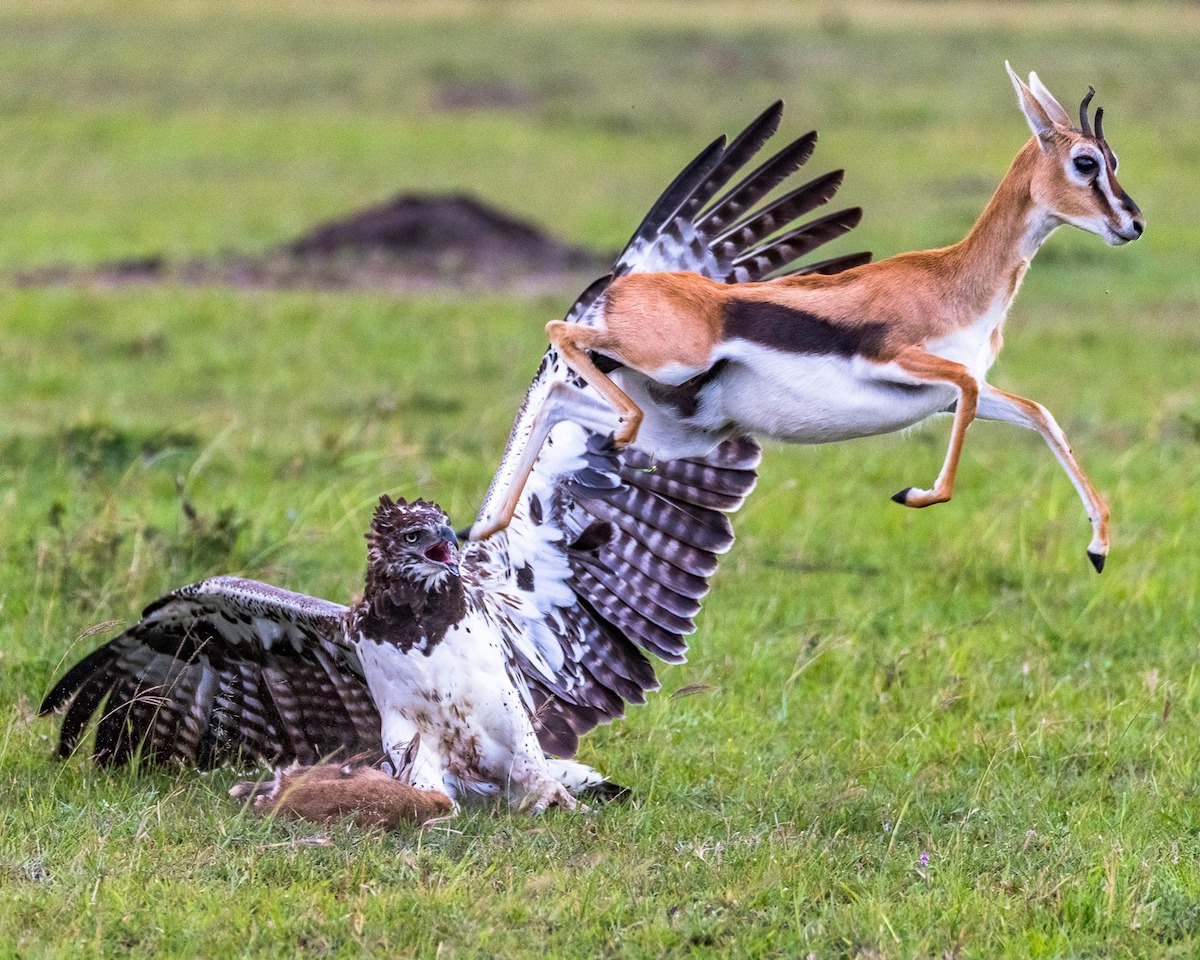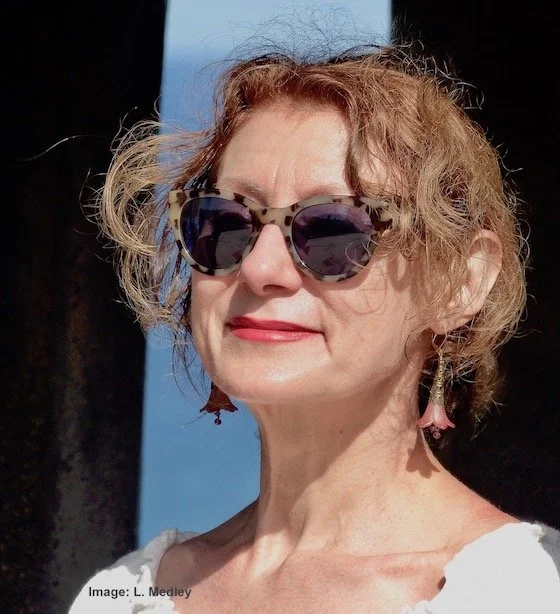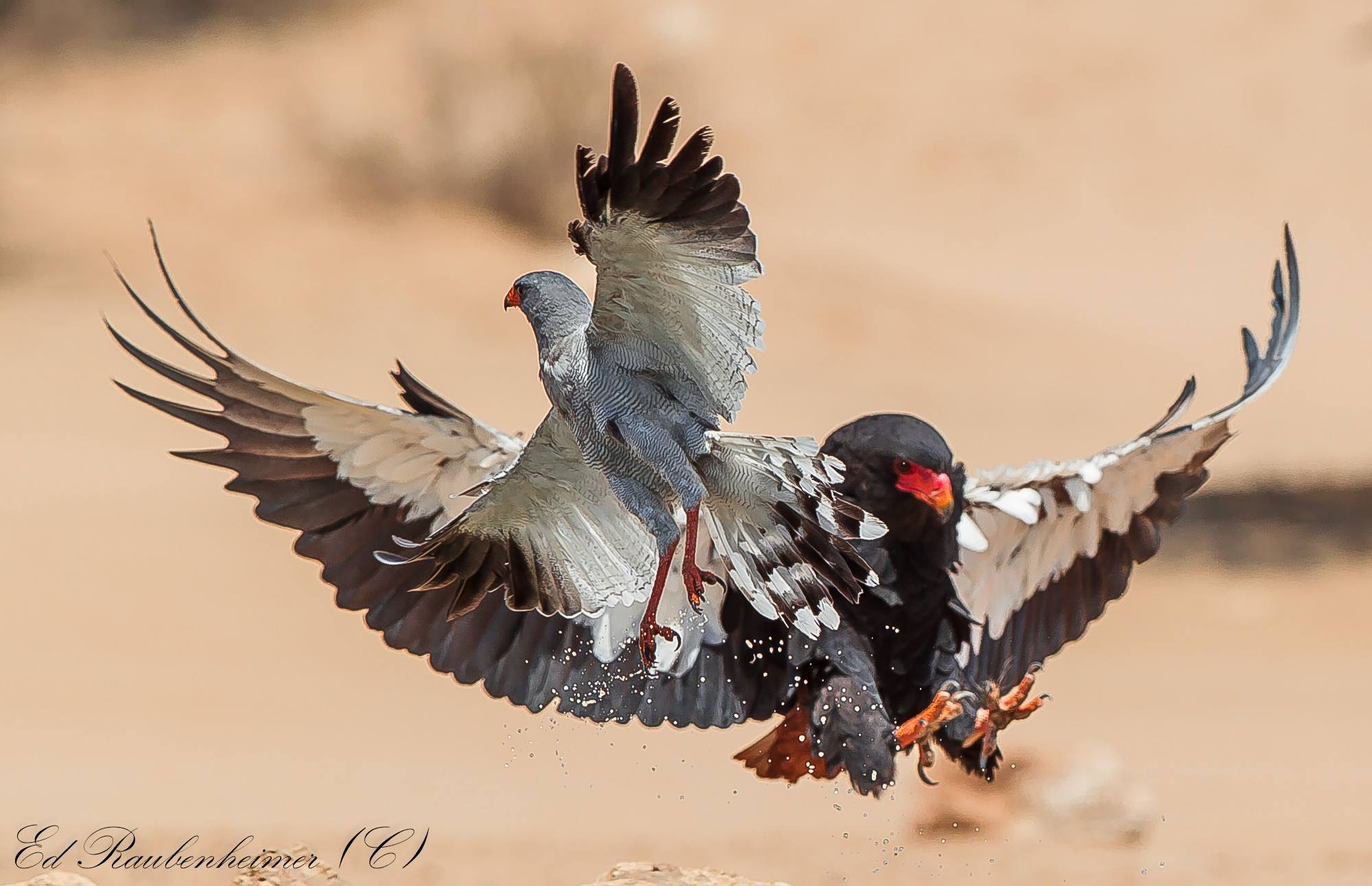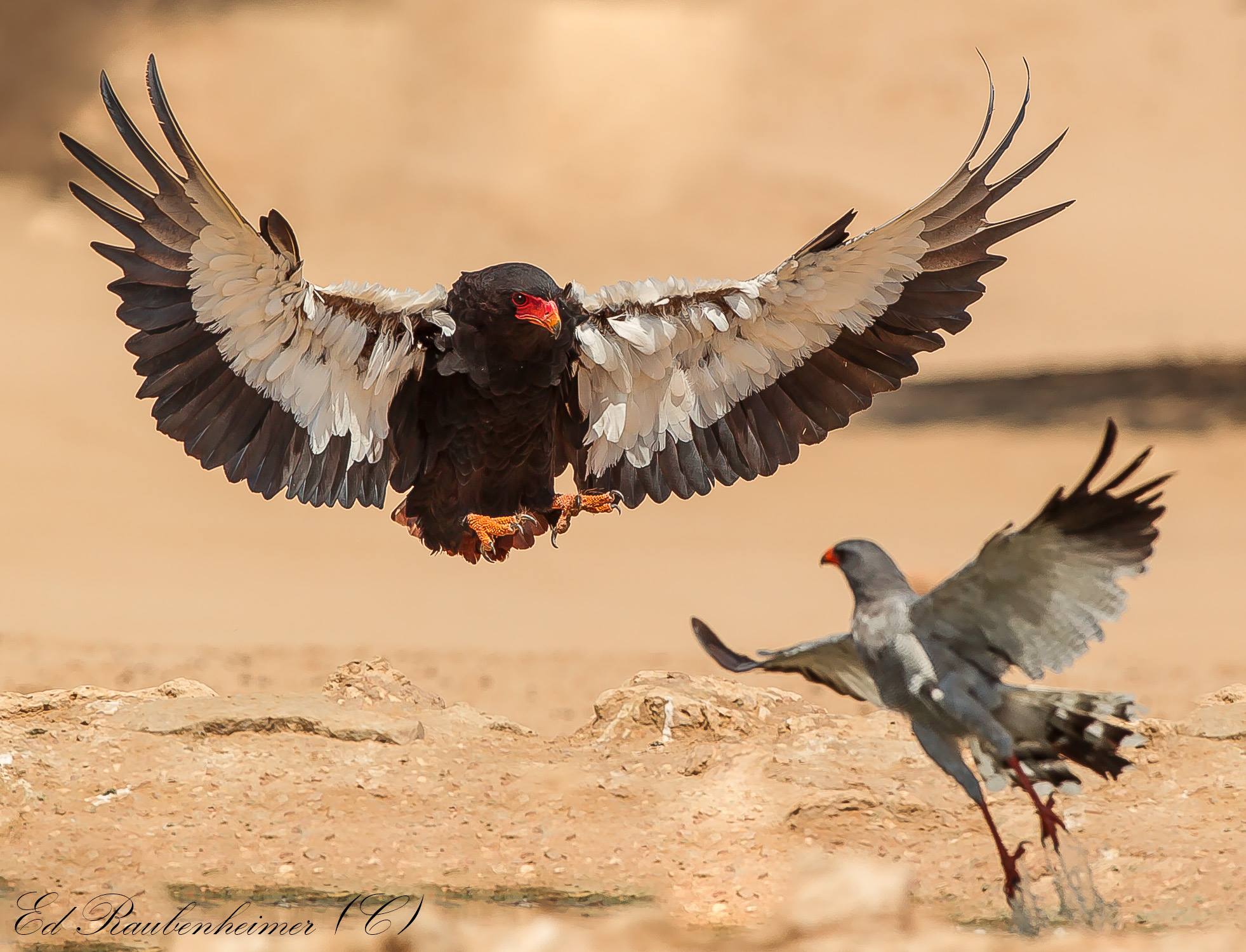Beware the Bold, Bad Birds of the African Bush
NEITHER THE THOMSON’S GAZELL FAUN, NOR ITS MOTHER WERE ANY MATCH FOR THE POWERFUL MARTIAL EAGLE. DOMESTIC GOAT AND LAMB HAVE ALSO FALLEN PREY. THIS RARE IMAGE WAS TAKEN IN KENYA BY ©Linda Winward Skeen.
ROBERTA KRAVETTE, EDITOR. CONTACT ME.
By Roberta Kravette
✍︎ Editor’s Note: This article was first published on March 19, 2019 and revised August 2022.
This Isn’t Your Grandma’s Birdwatching
African raptors.. Sure, Africa has sweet, colorful, songbirds - but then there are the bad boys of the air. From acrobatic eagles to strutting, snake-stomping raptors to the fabulous fishers, the outrageous behaviors of these birds can leave you speechless. I can not get enough of South Africa’s bad-ass birds! You have to be tough to share your home with lions, leopards, elephants, and jackals. In sub-Saharan Africa, birding has drama all its own.
✔︎ Trip Tips
What: Birding Africa, raptors!
Where: Southern Africa
When: Each season has specialities.
Who: Adults, birding is a quiet sport
How: With a professional guide Ask me.
I asked our friend, naturalist Marc Cronje, a professional bird and wildlife guide, to name a few of his favorites – and of course, I want to know their secrets!
“I just love bird watching in general as it’s one big adventure. You never know what you can see and find. Birding takes you all over [Africa’s] amazing destinations and lets you see her incredible parks, wildlife and scenery. Birding makes the whole wildlife experience so much more rich.” — Marc Cronje
Interested in seeing Africa’s birds? Ask me how. Put Birding in Africa in the subject line.
Martial Eagle
Africa’s Largest & Most Powerful Eagle
MARTIAL EAGLE, AFRICA’S LARGEST, MOST POWERFUL WEIGHS IN AT ALMOST 14 PUNDS (6.4KG) AND HAS AN ADULT WINGSPAN OF BETWEEN 6.5 FEET (200 CM) TO 8.5 FEET (260 CM) IMAGE: MEGAN MURGATROYD THANKS TO AVIAN EDUCATION AND CONSERVATION NETWORK
Martial Eagle: sub-Saharan Africa. Near Endangered, decreasing
Best Place in South Africa to See the Martial Eagle: Kruger National Park, South Africa and look for them in Etosha National Park, Namibia
Marc says, The name “martial’ eagle comes from the behavior of the males fighting in the air over territorial disputes. They kick each other in mid-flight, thus looking like people doing martial arts.
Their kick can knock a grown man off his feet or grab large prey like mongoose, monkeys, an impala calf, and even the world’s heaviest bird, Kori Bustard (see that bad boy below).
But size and strength have not helped the species thrive against human encroachment. Martial eagles are in rapid decline, even in protected areas. Death comes in many ways: Locals, fearing for their domestic animals, hunt them; they die accidentally and intentionally through eating poisoned carcasses or bait; and electrocution by power-line all take a toll.
HABITAT LOSS IS PUTTING A BIG STRAIN ON MARTIAL EAGLE LOVE. With a HOME RANGE UP TO 50 SQ. MILES (80.5KM) THEY MAY TRAVEL A HUNDRED MILES (161KM) OR MORE TO FIND A MATE. AS HABITAT SHRINKS, THE LIKELIHOOD OF SUCCESS IS SHRINKING. BUT SOMETIMES THEY GET LUCKY. IMAGE: ©TOETSEI TERBLANCHE.
The Secretarybird
Africa’s Long-Legged Power Stomper
THE LEGS OF THE SECRETARY BIRD CARRY A PUNCH THAT DELIVER MORE THAN 5 TIMES ITS BODY WEIGHT, ENOUGH TO KILL A COBRA. Image: ©Marc Cronje
Secretarybird: sub-Saharan Africa. Vulnerable, Decreasing
Best Place in South Africa to See the Secretarybird: Kruger National Park and Mkuze Game Reserve, both in South Africa, and Etosha National Park, Namibia. And I watched them for hours in The Kgalagadi Transfrontier Park South Africa and Botswana.
This bird is one of my favorites. Secretarybird is another enormous avian species (4 feet/ 110-130 cm tall and 7-9 pounds/3.1-4.1kg), but it’s their coloring - blue-grey and black feathers with an orange and yellow face, blue beak, that fantastic headdress, their long-legged strut that makes them unforgettable.
The secretary bird's legs hold the record for the longest of any bird of prey, causing this raptor to sometimes be mistaken for a crane. Look for them on the ground, striding through in the semi-arid desert grasslands. But this bird’s legs are not just for walking. And their unique approach for dispatching prey will stay with you forever.
Says Marc Cronje, “The secretary bird feeds on a wide variety of prey, specializing in catching snakes. It uses its long powerful legs to deliver hard downward blows using their feet to kill prey. Many times they aim blows directly on the head of their prey.” These birds are snake specialists! Take a look at the video below.
Bateleur Eagle
Tightrope Walker of the African Skies
BATELEUR EAGLES DO NOT BACK DOWN. EVEN WITH TWO AGAINST ONE THIS BIRD DOES NOT LOOK WORRIED. IMAGE:© ED RAUBINHEIMER
Bateleur Eagle: Africa. Near Threatened and population decreasing
Best Places to See Bateleur Eagle: Kruger National Park and Mkuze Game Reserve, South Africa and Etosha national Park, Namibia
Marc says, “The bateleur eagle is the most famous of all the snake eagles. Bateleur is French for 'tightrope-walker.' This name was probably chosen because of its distinctive aerial acrobatics .”
The bateleur’s amazing mid-air displays can be seen mostly in the breeding season, with 360-degree rolls, turns, and somersaults. Mating pairs hurtle toward each other from amazing heights, the male steeply diving toward the larger female. She then rolls on her back and raises her claws to him. The birds barrel-roll through the air, slapping their wings loudly, and making crowing calls, the sound of their passion carrying over great distances.
But this bird is as bad on the ground as they are in the air. They do not back down.
BATELEURS ARE NOT ALL FIGHT AND BLUSTER, THESE AMAZING EAGLES MATE FOR LIFE. IMAGE: ©MARC CRONJI
Southern Ground Hornbill
Only His Abyssinian Hornbill Cousin is Larger
SOUTHERN GROUND HORNBILL’S SIZE AND BREEDING HABITS MAKE IT UNIQUE AMONG ALL OTHER BIRDS Image: ©ANNE MARIE SCHEEPERS, For the Love of it
Discover Africa’s birds and wildlife. Contact me Put: “Take me to Africa” in the subject line
Southern Ground Hornbill: Southern Africa. IUNC: Vulnerable Within South Africa: Endangered
Best Place in South Africa To See the Southern Ground Hornbill: Kruger National Park, South Africa
The endangered Southern ground hornbill is considered a flagship species for the South African savannah biome and is in a separate family from all other hornbills. Marc Cronje shared, “These hornbills have one of the slowest reproductive rates in the bird kingdom, producing only one chick approximately every 9 years. They are co-operative breeders, with a single dominant breeding pair in a social group, and the rest of the birds acting as helpers. Juveniles are dependent on their parents for up to one year and will stay with them for several years before leaving the social group, if at all.”
THE SOUTHERN GROUND HORNBILL IS A HUNGRY BIRD FEEDING ON REPTILES, FROGS, SNAILS, AND MAMMALS UP TO THE SIZE OF A HARE. IMAGE: ©MARC CRONJE
Since 2014, the Mabula Ground Hornbill Project, Birdlife Species Guardian combines chick rescue with education and awareness campaigns for the local population. Habitat loss is a significant factor in their decline, but poisoning, electrocution, and general persecution are all contributing factors.
These fellows enjoy a good meal of small mammal going after anything up to the size of a hare - so bunny beware!
Saddle-Billed Stork
Tall, Silent and an Ancient Communicator
THE WINGSPAN OF A SADDLE-BILLED STORKS STRETCHES FROM 7.9 TO 8.9 FEET (2.4-2.7M). THEY STAND UP TO 59 INCHES (150CM), SHOULDER HEIGHT TO AN AVERAGE MAN. IMAGE ©MARC CRONGE
Saddle-billed Stork: sub-Saharan Africa. Least Concern, but declining
Best Place in South Africa to See Saddle-billed Stork: Kruger National Park, Augrabies Falls Park, Okavango Delta, Botswana
SADDLE-BILLED STORKS, PLAYED A VITAL ROLE IN ANCIENT EGYPTIAN COMMUNICATION. ITS LIKENESS DENOTED THE HIEROGLYPHIC LETTER “BA,” PART OF THE DEPICTION OF THE PHARAOH KHABA’S NAME. IMAGE: ©MARC CRONJE
Marc’s identification tip: “This is the tallest stork in the world with female storks being 10-15% smaller than the males. The way to tell them apart is that the females have yellow eyes and the males have dark brown eyes. In South Africa, saddle-billed storks are largely confined to the north-eastern tropical lowland with the majority of the population residing along the riverine habitat in Kruger National Park.”
This big bird is silent. Saddle-billed storks are missing the syrinx, the vocal organ of birds. They "clack" their bills, but otherwise, the saddle-billed stork is a mute giant. Still, they played an important part of ancient Egyptian communication - see the caption to the right.
Kori Bustard
Meet The World’s Heaviest Flying Bird
LOOK FOR KORI BUSTARDS STRIDING THROUGH THE GRASS SEARCHING FOR LIZARDS, SNAKES, AND SMALL MAMMALS FOR LUNCH. IMAGE: ©MARC CRONJE
Kori Bustard: sub-Saharan Africa. IUCN: Near Threatened, but in South Africa: Vulnerable
Beat Place in South Africa to See A Kori Bustard: Kruger National Park, South Africa, Etosha national Park, Namibia
Meet the planet’s heaviest flying bird: the kori largest of the bustard family, weighing up to 40 pounds (18.1k). Kori bustards are tall, between 2 1/2 to 4 1/4 ft tall (76cm - 129cm) and from beak to tail are about 4 feet long (122cm)! Females are about half that size. Koris need a running start to become air-born and prefer to fly only as an escape plan. These are big birds.
Experience Africa’s Bold, Bad birds for yourself. Let’s talk
Kori’s like semi-arid savannah and grasslands, however, says Marc, “…it is listed as Vulnerable in South Africa mainly due to habitat loss of their grasslands due to [the spread of] agriculture. Kruger National Park is one of the best places to see this iconic species.” And in most of its shrinking range, the kori is still hunted for meat and feathers used for fishing flies.
White Backed and Cape Vultures
The Carrion Clean-Up Crew
WHITE BACKED VULTURE COMING IN FOR A LANDING. VULTURES DO NOT HUNT AT ALL, THEY LIVE ENTIRELY ON CARRION. IMAGE: ©LEON BRUGGEMANN
CAPE VULTURES, LIKE ALL OTHER VULTURE SPECIES, HAVE WEAK FEET AND SO CAN NOT CARRY FOOD AWAY, THEY MUST EAT AS SOON AS THEY SEE THE FOOD. IMAGE: ©LEON BRUGGEMAN
White Backed Vulture: Critically Endangered The Cape Vulture: Southern Africa. Endangered
Best Place in South Africa to See The Cape Vulture: Kruger National Park. Can be found in the Okavango Delta, Botswana
No roundup of South Africa’s bad-ass birds would be complete without paying homage to the clean-up crew of the wild: vultures. Meet the White backed vulture and the Cape vulture (endemic to Southern Africa) and, disappearing steadily since the 1980’s.
Both vulture species are impacted by the same perils as the big raptors, poisoning (targeted and accidental), electrocution, loss of habitat, and decrease in carrion, especially during nesting season.
Vultures rely on their superb eyesight to spot carrion. These birds do not hunt at all, vulture feet are too weak to carry anything even if they caught it - which they do not try to do. They are also too heavy to fly well, but soar beautifully on thermals riding them for distances up to 93 miles (150km)! Unlike most vultures, the Cape vulture “dresses” in shades of white, beige, and tawny with black details on their wings. And yes, vultures do keep themselves clean.
Southern Bald Ibis
Bald is Beautiful
IBIS ARE USALLY WADING BIRDS BUT THE SOUTHERN BALD IBIS PREFERS ARID AREAS WHERE THEY LOOK FOR INSECTS, SMALL REPTILES, RODENTS AND LITTLE BIRDS. THEY BREED IN ROCKS AND CLIFFS. IMAGE:© AJAY BHOOPCHAND
Southern Bald Ibis: Southern Africa, Lesotho and Swaziland. Vulnerable
Best Place in South Africa to See the Southern Bald Ibis: Wakkerstroom
The southern bald ibis is a large bird ( 74-80cn tall, wingspan 125 – 135cm). You’ll find them out in the open – when you can find them. Their unusual look, minimal numbers, and confined range make any spotting of this bird a red-letter day.
The southern bald ibis is – well, bald. The feather-less skin on its red-capped head and white face are somewhat wrinkled in a grandfatherly way, making its dark, feathered body seem even more substantial. Look for the long red bill, short red legs, and glossy green neck rough.
Marc tells us, “This unique species is endemic to Southern Africa with a restricted range centered on the Drakensberg. It is listed as vulnerable because of small population size (probably not more than 2000 breeding pairs), being endemics (only occurring in north-eastern South Africa, Lesotho, and western Swaziland) and having a restricted distribution (high altitude grasslands). Our South African tours target on finding this special species.”
Thanks, Marc, for introducing us to these baaad birds!
Well, I’ve run out of space, but Africa still has lots more feathered tough guys. You’ll just have to come over and spot them for yourself! In the meantime I’ll leave you with a couple of my favorite fishing birds.
















